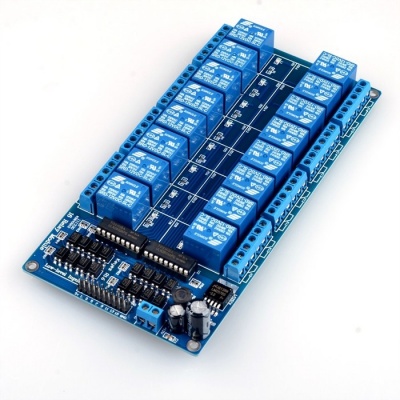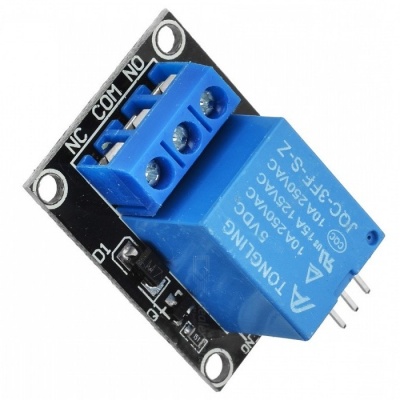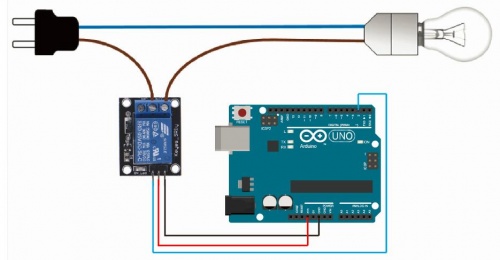How it's made
Physical computing
Basic electronics and circuits
Arduino introduction
all about microcontrollers
simple circuit and sketches
Sensors and Actuators
Sensing
Actuators with Adafruit Motor Shield
DC motor
push-pull solenoid
Servo motor
=Stepper motor
TIP 120 circuit
Relay Module
Introducing the Relay Module
A relay is an electrically operated switch. It means that it can be turned on or off, letting the current go through or not.
Controlling a relay with the Arduino is as simple as controlling an output such as an LED.
Notice the writing on the module terminals
COM: common pin
NO (Normally Open): there is no contact between the common pin and the normally open pin. So, when you trigger the relay, it connects to the COM pin, and supply is provided to a load
NC (Normally Closed): there is contact between the common pin and the normally closed pin. There is always a connection between the COM and NC pins, even when the relay is turned off. When you trigger the relay, the circuit is opened and there is no supply provided to a load.
If you want to control a lamp, for example, it is better to use a normally open circuit, because we just want to light up the lamp occasionally.
Wiring
it is very straightforward as you can see. But always double-check the relay module connections before you plug things together.
GND: goes to ground
VCC: goes to 5V
IN1: controls the relay (it is connected to an Arduino digital pin)
OK, but maybe you want to control more than one thing??
then no porblem
 here are 16 channels:)
The wiring is the same, you will just need 16 digital pins on the Arduino
here are 16 channels:)
The wiring is the same, you will just need 16 digital pins on the Arduino

